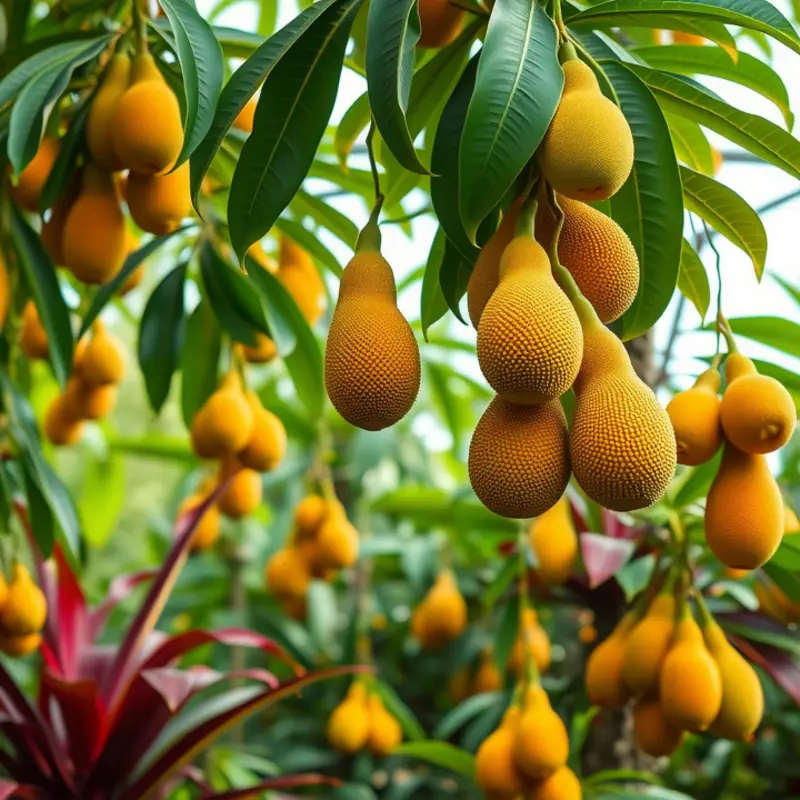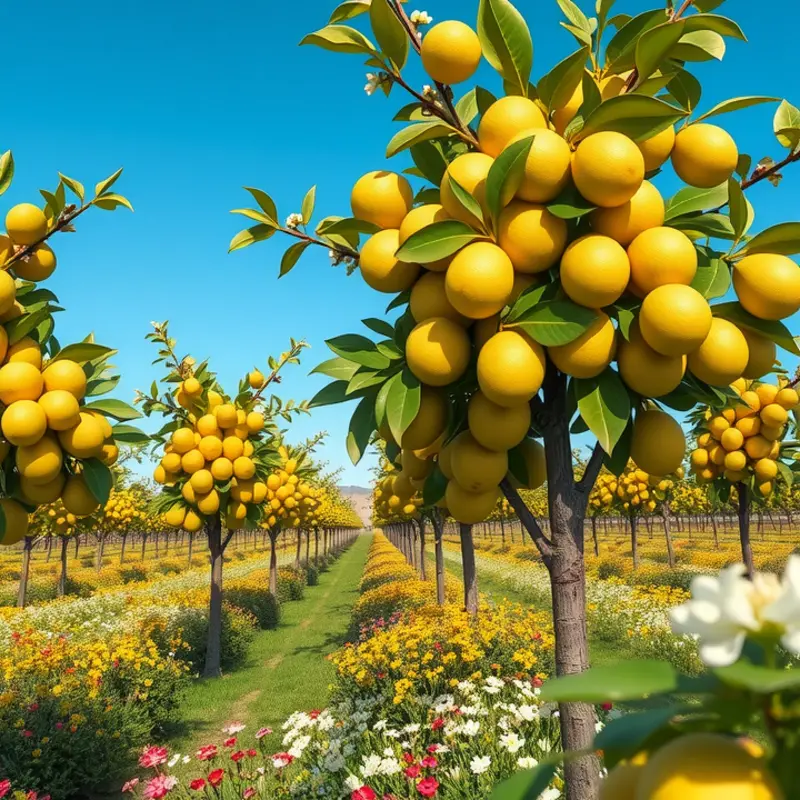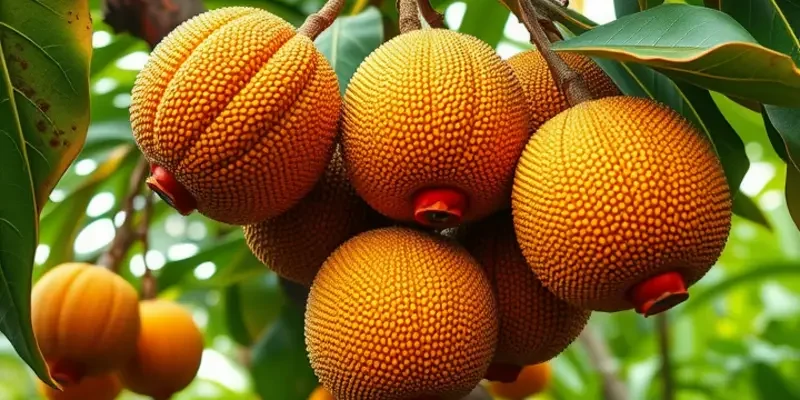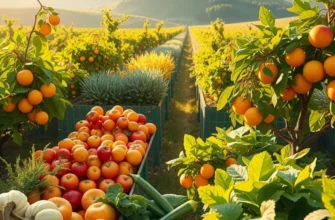Fruits are not merely snacks or desserts but integral components of culinary traditions across the globe. Each region boasts unique fruits, shaped by its climate and culture, enriching the local palate and culinary practices. From the tropical bounty of Southeast Asia to the temperate orchards of Europe, embracing these regional fruits opens doors to authentic recipes and flavors distinct to their origins. Let’s embark on a flavorful journey exploring how these fruits inspire dishes that tell their cultural stories.
Tropical Treasures: The Role of Jackfruit in Southeast Asian Cuisine

Emerging as a symbol of tropical abundance, jackfruit holds a revered spot in Southeast Asian kitchens. Known for its impressive culinary flexibility, this massive fruit displays a chameleon-like ability to transform into either savory or sweet delights. Weighing up to 100 pounds, it commands attention not just for size but for versatility in dishes ranging from elaborate curries to straightforward street foods.
In its unripe form, jackfruit closely resembles the texture of pulled meat, making it a favored ingredient in vegan and vegetarian dishes. This fibrous texture integrates seamlessly into savory recipes like jackfruit curry. A staple in the cuisine of Southern India, jackfruit curry combines the fruit with creamy coconut milk and an intricate blend of spices, delivering a dish rich in both flavor and texture.
Ripe jackfruit offers a markedly different experience, morphing into a sweet, honey-like treat. In Thailand, golden jackfruit pods often appear in desserts such as sticky rice or are simply enjoyed fresh. The fruit’s inherent sweetness also becomes an advantage in making jams, ice creams, and smoothies, demonstrating its range beyond traditional uses.
Indonesian cuisine showcases jackfruit in gulai nangka, a rich dish where the young fruit is stewed with turmeric, coconut milk, and a medley of local spices. This dish highlights jackfruit’s ability to absorb flavors, making it an ideal canvas for experimentation. Similarly, in the Philippines, langka is integrated into a wide array of meals, from sinigang stews to sweet turon, or deep-fried rolls filled with ripe jackfruit and banana.
Jackfruit’s wide cultivation across Southeast Asia contributes to its status as a dietary staple. In societies where food scarcity may arise, this fruit’s high carbohydrate content offers much-needed sustenance. Beyond its nutritional value, the cultural significance of jackfruit cannot be overstated. It often features in local festivals and traditional ceremonies, signaling prosperity and abundant harvest.
Preparing this colossal fruit requires a blend of skill and patience. A substantial tip for handling jackfruit is applying oil to your knife and hands, as both the skin and sap present sticky challenges. Once tackled, the reward is a bounty of versatile fruit segments ready to enhance any meal.
A visit to any local market in Southeast Asia will likely reveal mountains of these enormous green fruits. Vendors deftly cut through them, revealing bright bulbs ready for cooking or eating raw. Inspired by such displays, those wishing for a low-waste cooking adventure can consider trying out jackfruit, as even its seeds can be boiled or roasted for a nutritious snack. Check out this guide on low-waste cooking prep for more ideas.
Jackfruit, while still emerging on the global stage, stands as a testament to the rich tapestry of Southeast Asian culinary arts. Understanding its place in local cuisines not only broadens culinary horizons but supports agricultural diversity integral to this culturally vibrant region.
Citrus Symphony: The Influence of Persian Lime in Middle Eastern Flavors

Persian lime, a cherished jewel of Middle Eastern cuisine, is renowned for its transformative effect on dishes. Known for its bright acidity and unique tartness, it infuses a burst of flavor that unifies and elevates culinary creations across the region.
In traditional Middle Eastern cooking, Persian lime plays a pivotal role in various dishes. Its zest and juice are incorporated into savory stews, known as khoresh in Iran. These stews are slow-cooked medleys of meat, herbs, and spices that achieve a perfect balance of flavors with the addition of lime. The tartness cuts through the richness of the meat, creating a harmonious dish that exemplifies the depth of Persian cuisine.
Additionally, Persian lime is essential in creating refreshing beverages. Infused with mint leaves, its juice transforms into sharbat, a traditional drink that quenches thirst in the arid climate. This beverage is a staple throughout the region, highlighting the lime’s ability to bring vibrancy and refreshment.
Preservation methods for Persian lime are as fascinating as the fruit itself. Drying is a popular technique, where limes are left under the sun until they turn black and hard. These dried limes, known as ‘limoo amani’, are subsequently used in cooking to impart a distinct, musky sourness. They add complexity to stews and soups, releasing their potent aroma as they simmer.
The cultural significance of Persian lime extends beyond its culinary uses. It is often seen in markets alongside other staples, symbolizing freshness and vitality. In Middle Eastern celebrations, the zest and color of the lime are synonymous with hospitality and generosity.
For those inspired to integrate Persian lime into their own cooking, understanding its pairing potential is key. When combined with ingredients like saffron, garlic, and turmeric, Persian lime creates flavor profiles that are as diverse as they are delicious. Its bright acidity complements the earthiness of legumes and grains, making it a versatile addition to any pantry. For those looking for alternatives to salt, this citrus wonder is an ideal choice, providing an equally satisfying flavor boost. For more tips on using ingredients as alternatives to salt, check out this guide.
Incorporating Persian lime into your kitchen repertoire not only enhances your dishes but also connects you with a rich culinary tradition that values flavor and balance. As you explore the potential of this remarkable fruit, you’ll uncover the true essence of its role in Middle Eastern gastronomy.
Final words
Regional fruits are integral to understanding the rich tapestry of global cuisines. Each fruit carries with it not only taste but also cultural significance and historical context, enhancing the culinary experience. By embracing these local harvests, home cooks and food enthusiasts can pay homage to the traditions that birthed these flavors. Whether preparing a jackfruit curry or drizzling Persian lime over grilled meats, incorporating regional fruits allows us to celebrate the Earth’s bounty and the cultures that nurture it. Let curiosity be your guide, leading you to new taste adventures!








